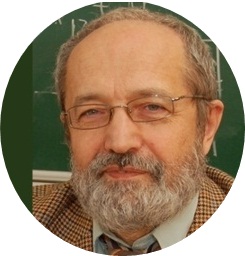

|
PROBLEMS OF THE THEORY OF SELFASSOCIATED SYSTEMSSvyatoslav KondratImperial College LondonMyroslav HolovkoInstitute for Condensed Matter Physics of National Academy of Sciences of UkraineThe focus of this lecture is on self-assembling systems, which we discuss from a perspective of the statistical theory. Self-assembling systems emerge e.g. in water-oil mixtures with the addition of surfactants, i.e. amphiphilic molecules consisting of polar (water-like) heads and oil-like tails. Surfactants prefer to position themselves between water and oil molecules, reducing the oil-water surface tension, which leads to a spontaneous formation of various structures, such as micelles, lamellar phases, cubic phases, ordinary microemulsions, etc. Three approach to these systems will be discussed. In microscopic models, a Hamiltonian is formulated on a lattice and the thermodynamic properties are described using the standard techniques of the statistical physics. In continuous approaches, a mesoscopic Landau-Ginsburg-like functional is constructed as a functional of some 'order parameters' (e.g. densities); this construction is typically based on symmetry considerations. Finally, in the effective membrane theories, the microscopic details of the system are ignored and the system is described in terms of the membrane curvatures, where the membrane is the water-oil interface. Advantages and disadvantages of these approaches are also discussed.Personal webpage Personal webpage |